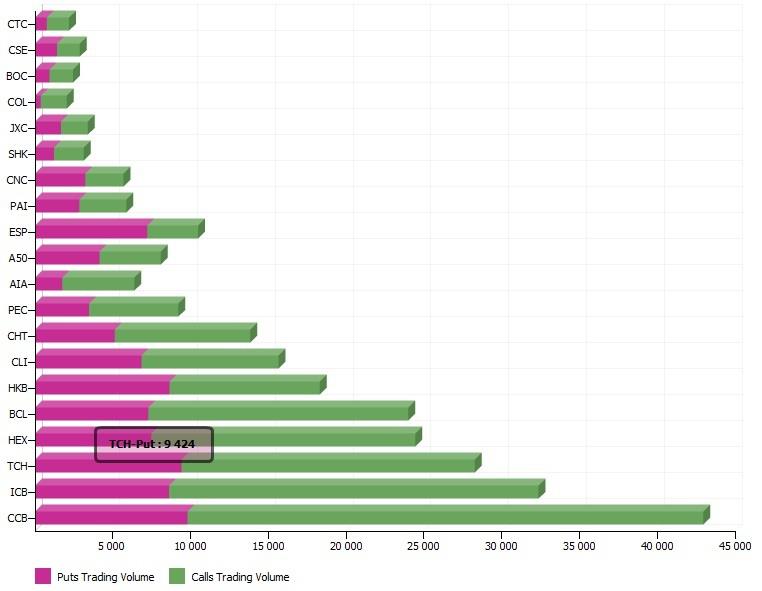An innocent question from Dow10k, via Twitter, encouraged my writing a simple post about Open Interest. There's no disagreement on the definition of open interst (OI), but after that, there is so much incredible information on the Internet that writing this post has become more difficult than expected.
First, a definition from our perspective as option traders: Open Interest is the total number of options (for a specific series) that have been written (sold), but not yet closed.
Positons can be closed
- When expiration arrives, options cease to exist
- When assigned an exercise notice
- When purchased in a closing transaction.
Open Interest also applies to futures contracts, but there are no assingment notices. Ownwes of a futures contract take delivery of the undelying asset when settlement (similar to an options expiation date) arrives.
***
The most commonly asked questions concerning OI is "What can I do with the number?" "How can it help me make trade decisiions?"
Some traders consider OI to be significant and use it as an indicator for technical analysis.
Others, myslef included, remind anyone who wants to use OI, that no one knows whether the option buyer is bullish when buying calls. It's just as likely to be part of a hedged trade in which stock is being shorted against the calls being bought. This may be a very bearish play (100 shares sold for each call bought), or a delta neutral, market neutral play. There is no way to know. Thus, concluding that call buyers are always bullish and put buyers are bearish is incorrect. If you accept that argument, then the OI serves no purpose as a market indicator.
Next it matters who enters the buy/sell order because only the seller may cause OI to increase.
- If the person initiating the trade (by entering an order) is a seller who is writing (not closing a long position), then OI increases unless the buyers are also closing (by covering a short position in that specific option series)
- If the person initiating the trade is a buyer, then open interest never increases. If the sellers are writing, OI is unchanged. If sellers are closing, then OI decreases
From my perspective, if OI only increases when the trader (not the market maker on the other side of the trade) is selling and never when he/she is buying, how can the OI of any option be considered to be an indicator of market direction? Most technical indicators are based on what buyers are doing.
Here's how I see this problem: In the futures markets [which started long before options were listed on an exchange (1973)], open interest increases when the trader buys a new futures contract. Thus, an increase in open interest indiciates buyers are in the market. And it may (I surely don't know) be a good indicator, suggesting that the bullish trend will continue, when open interest is increasing.
That is very different from the options world in which only sellers can increase open interest.
***
Consider this statement, made by a professional trader: "Open interest is most often used as an indication of the strength behind the market" There are only two possibilities: Either this blogger is mistaken, or he is writing of the futures markets and not the option markets. Sadly, he claims to be writing about both markets. This is one example of how bad information is easily spread.
His is not the only incorrect statement. I found others, but see no reason to publicize any of them. Options traders must not only contend with material written exclusively for futures traders, but with the output of thsoe who don't understand the difference between futures OI and options OI.
***
Wikipedia is the source of the following statement: "If open interest suddenly increases, that suggests a near-term rise in the underlying's volatility."
Once again, I see no reason to believe that there is any valid reason to conclude that an increasing open interest can predict furute volatility. Why? Because it's not buyers who initiate the trades that result in an increased OI. I get the argument: If a trader anticipates higher volatility, buying options is a smart move. But it's option sellers who initiate an OI increase. I fail to be convinced that this is predictive of anything.
***
Wikipedia claims another use for OI: A leveling off of open interest following a sustained price advance is often an early warning of the end to an uptrending or bull market. Declining open interest in call options implies that the market is liquidating, and suggests that the prevailing price trend is coming to an end.
Once again, I find myself in disagreement. The idea is that buyers, as a group. have stopped loading up on these options, indicating a trend reversal. The problem is that we NEVER know whether call buyers are truly betting on the upside or whether that are taking bearish positons by hedging.
Again, I'm assuming that these are the writings of a careless contriubutor to Wikipedia.
***
From McMillan on Options
"The best that an outside observer can do is to put together enough information [about OI] to make an educated guess."
That feels right to me. There may be some useful information buried in open interest numbers, but it's not a simple matter to figure out what it is.
